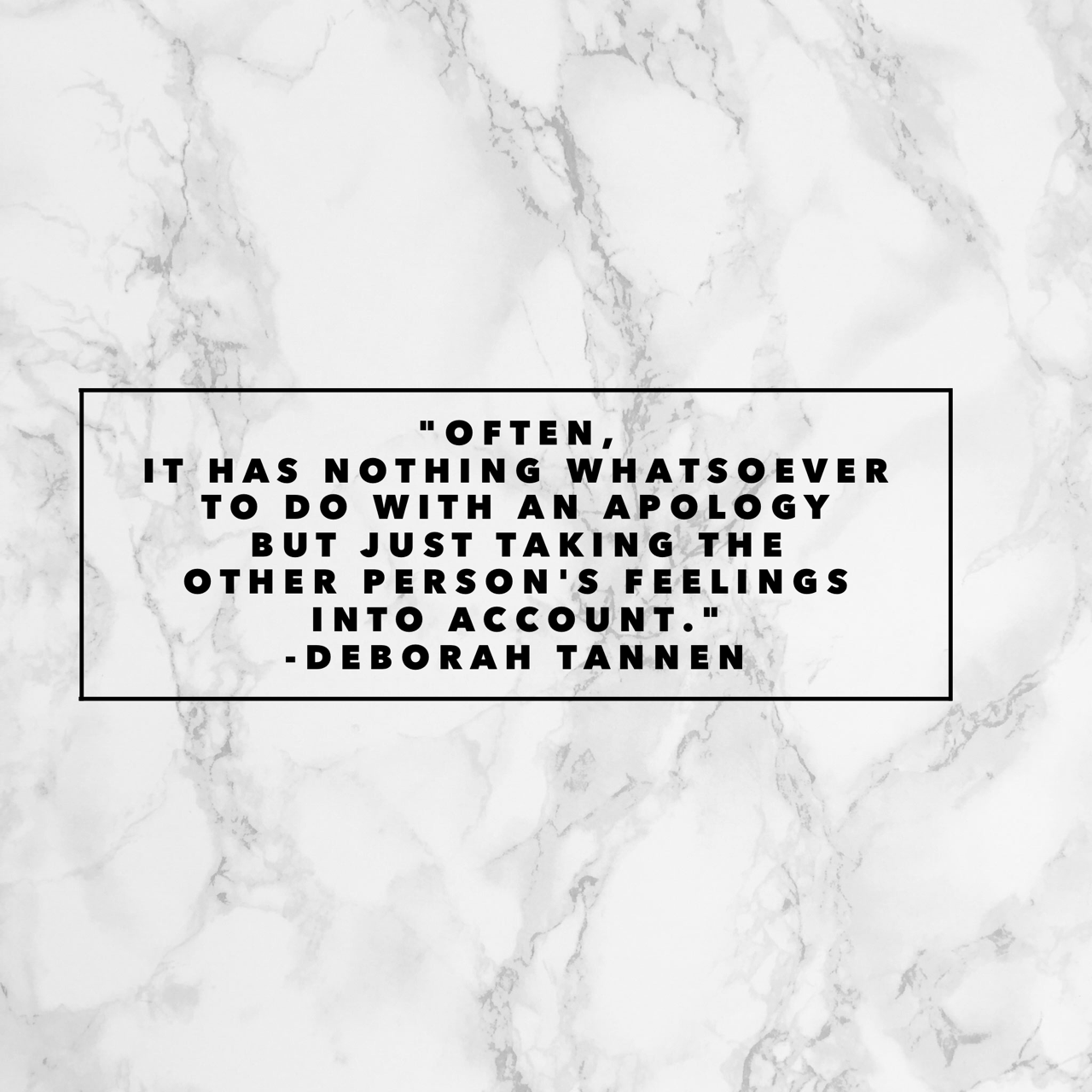
Apologizing at work by automatically saying “I’m sorry” has become all too common. It is so common, in fact, that it often seems insincere and merely a way to placate an irate customer, business associate, or co-worker. But it also implies that you are accepting fault for your actions or perhaps your company’s action. So apologizing at work is not always the best stance to take.
Dealing with Tendencies to Over-Apologize
Relationship expert Deborah Tannen has spent years studying how people communicate. With regard to being sincere about an apology, Tannen says, “Often, it has nothing whatsoever to do with an apology but just taking the other person’s feelings into account.”
You might find yourself in a situation where apologizing at work feels necessary because a customer is upset. Most of the time all the customer wants to do is vent their frustration and let their feelings be known. Listen to what your customer has to say and restrain yourself from blurting out “I’m sorry.” Acknowledge your customer’s feelings and offer solutions to their problem so that you can both move forward.
Apologizing at Work Without Saying “I’m Sorry”
The word “sorry” has been so overused that many people have become desensitized to it. If you rush to apologize, you’re putting yourself at a disadvantage, whether you’re at fault or not. Instead of being on equal footing with your customer, you have now given them the upper hand and you could be expected to comply with their demands. Mistakes happen. If you’re at fault, you should own up to it and fix the mistake; however, be smart about how you apologize.
Instead of automatically saying “I’m sorry,” consider other ways to apologize that offer a reasonable degree of remorse and/or acknowledge your co-worker’s, customer’s, or even your partner’s feelings. Consider these alternative phrases that can be construed as more sincere than “I’m sorry”:
- I completely sympathize with your frustration or disappointment or situation.
- I regret the inconvenience or pain that you have experienced.
- It is unfortunate that this situation happened. What can I do to fix the problem?
- What a shame that this happened.
- Please forgive me for my error or insensitivity.
- I am entirely at fault and I apologize.
Keep in mind that you may not always be able to make the customer happy with your apology and solution. And, unfortunately, some customer relationships might not salvageable. But by being sincere, taking the time to listen to an unhappy customer, and coming to an agreement, you will save more customer relationships than not.




